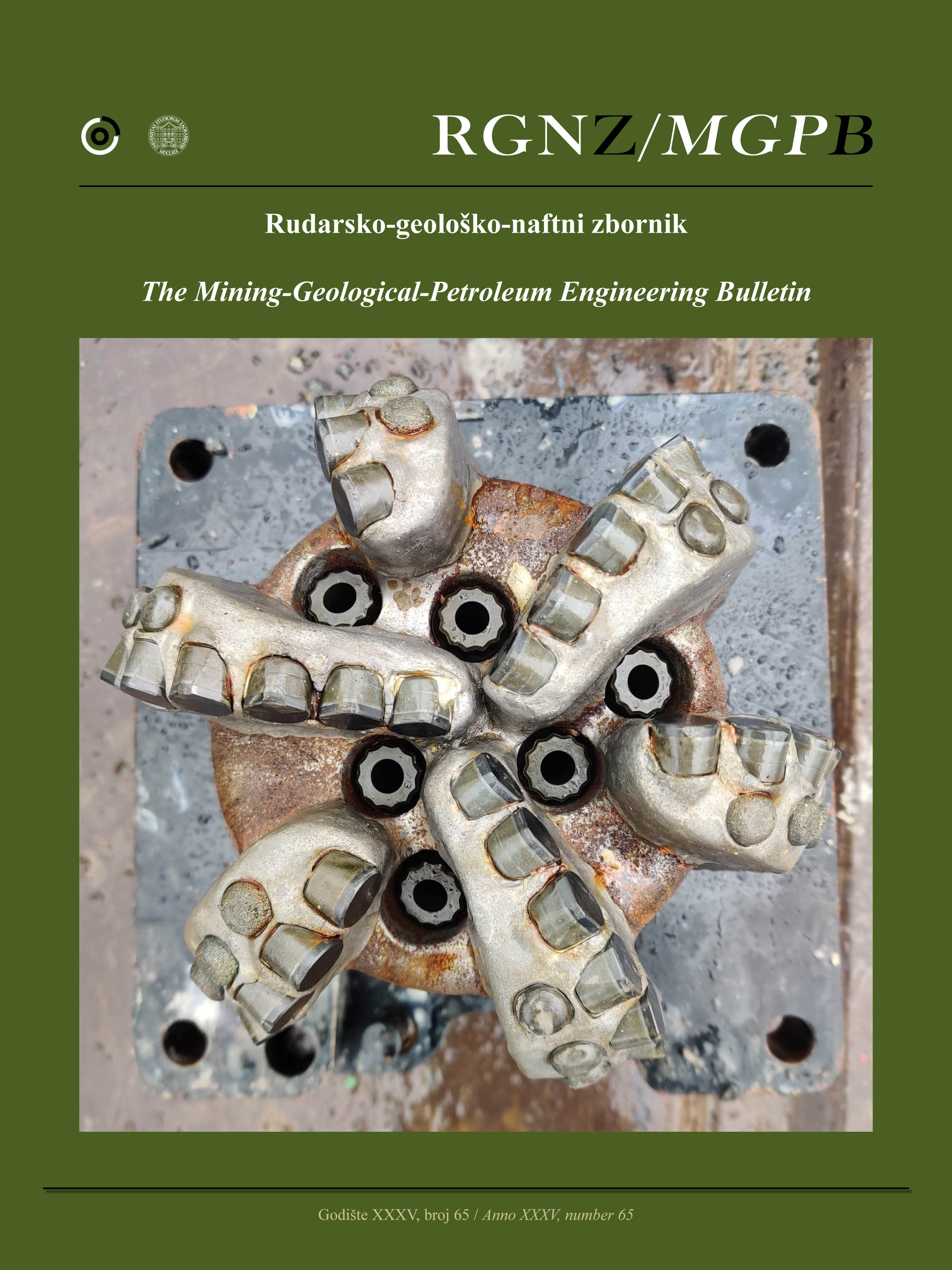Identification of Anthropogenic Materials in Lake Ciburuy Sediments Using Physico-Chemical Properties and Pollution Index
DOI:
https://doi.org/10.17794/rgn.2023.4.10Keywords:
anthropogenic, physical and chemical properties, pollution indexAbstract
Lake Ciburuy area is highly impacted by a wide range of human activities, including residential areas, rice fields, animal husbandry, plantations, dense vehicular traffic, and various industries, leading to the accumulation of pollutants. Particulates generated by the anthropogenic activities will be carried away and settle with the eroded soil to become sediment in the lake. This could cause serious problems in the aquatic environment if there is no monitoring study. Therefore, this study aimed to identify the anthropogenic material produced by human activities using physical and chemical properties analyses and pollution index calculations. The analysis of physical properties showed that Electrical Conductivity (EC), Total Dissolved Solid (TDS), and magnetic susceptibility were within the range of 30 – 790 µS/cm, 29 – 555 mg/L, 7.310 – 3431.956 ×10-8 m3/kg, respectively. The X-ray diffraction (XRD) and the hysteresis parameter indicated that the samples contain ferrimagnetic materials, particularly magnetite with a mixture of Pseudo-Single Domain (PSD) and Multi-Domain (MD). The Scanning Electron Microscope (SEM) and Energy Dispersive Spectroscopy (EDS) identified the morphology of the magnetic mineral with different shapes, such as octahedral and spherule. Furthermore, the spherule shape indicated the presence of anthropogenic materials in the sample. In terms of chemical properties, this study measured the pH and Potential Toxic Elements (PTEs) in the sediments. The pH ranged from 7.2-8.9, while the PTEs showed moderate to very severe levels of contamination by Mn, Pb, Zn, Cd, and Cu, which exceeded the sediment quality standard. The PCA reveals the interconnection between physical and chemical properties, which can identify pollutants derived from anthropogenic materials, as well as indicate low, medium, and high levels of pollution in the lake area.
Downloads
Published
How to Cite
Issue
Section
License
Copyright (c) 2023 Mileani Shafaria, Kartika Kirana, Dini Fitriani, Eleonora Agustine, Asep Harja, Cipta Endyana

This work is licensed under a Creative Commons Attribution 4.0 International License.
Creative Commons-BY
Authors who publish with this journal agree to the following terms:
In agreeing this form, you certify that:
- You read the ethical codex of the RGN zbornik available at journal web.
- You submitted work is your original work, and has not previously been published and does not include any form of plagiarism.
- You own copyright in the submitted work, and are therefore permitted to assign the licence to publish to RGN zbornik.
- Your submitted work contains no violation of any existing copyright or other third party right or any material of an obscene, libellous or otherwise unlawful nature.
- You have obtained permission for and acknowledged the source of any illustrations, diagrams or other material included in the work of which you are not the copyright owner.
- You have taken due care to ensure the accuracy of the work, and that, to the best of your knowledge, there are no false statements made within it.
- All co-authors of this submitted work are aware of, and in agreement with, the terms of this licence and that the submitted manuscript has been approved by these authors.
Publication licence
You retain copyright in your submitted work, according to journal license policy (CC-BY). By signing this form you agree that RGN zbornik may publish it under the publication licence. In summary the licence allows the following:
Anyone is free:
- To copy, distribute, display, and perform the work.
- To make derivative works.
Under the following conditions:
- The original author must always be given credit.
- The work may not be used for commercial purposes.
- If the work is altered, transformed, or built upon, the resulting work may only be distributed under a licence identical to this one.
Exceptions to the licence
In addition to publishing the work printed under the above licence, RGN zbornik will also enable the work to be visible online.
The journal editorial can change the licence rules anytime but it cannot retroactively restrict author(s) rights.


